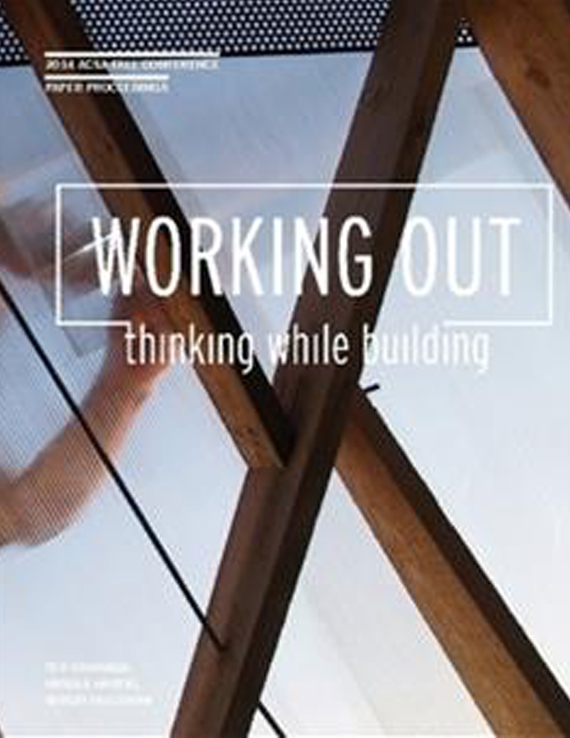Author(s): Nick Gelpi
This paper will highlight several important case studies of mocking-up and situate their history as a foundation of design build. First, Frank Lloyd Wright’s full scale column failure test from the S.C. Johnson Wax Administration Building in Racine Wisconsin form 1937 and second the full scale fabric and wood mockup of Mies Van der Rohe’s Kroller-Muller Villa from 1912. In both cases the effects of full scale are rehearsed in two complimentary ways. One tests entanglements with reality as the behavior of form as the performance of structural flows at full scale, while the other tests the effects of form at full scale. In both cases something is learned and gained from the process of building at full scale, not possible to be seen in small scale conventional representations. In short, the designs had to be enacted or plated in some fundamental way, as preconceived notions weren’t adequate to produce new thought and understanding. This paper will examine these two canonical studies in relation to a series of bent plywood prototypes which led to the construction of a full scale inhabitable pavilion. The link between the historical case studies and a series of contemporary projects will be delineated and compared in relation to the Bauhaus foundation course, the Vorkurs. The Vorkurs class was the introduction to the curriculum of the Bauhaus in which “…students learned by doing, experimentation for its own sake was encouraged and ‘play’ was considered key in imparting important theoretical discoveries.” This paper highlights a range of Mocking-up and the progression of the Bauhaus foundation class, progressing from something preconceived to the intentional shedding of preconceptions in the pursuit of new insights into the new capacities and potentials, a relevant definition for ‘mockups.’ With the Vorkurs in mind we can situate these large scale mockups as examples of experimentation in which thinking is building, and building is play for the sake of experimentation. Shouldn’t contemporary design build incorporate more aspects of play, destabilizing the conventional methods of construction and assembly? When Josef Albers taught the 3rd installment of the Vorkurs class, students would visit workshops such as cabinet makers, wall paper factories, even breweries to criticize and rethink their manufacturing procedures. While both Mockups represent types of built test-subjects, what becomes clear are the differences between the architectural model as a rhetorical device, and the model as an instrumental test subject. These test subjects suggest a new type of practice where the architect looks for evidence outside the normal conventions of practice abandoning preconceptions, producing new entanglements with reality both expected and even hopefully anticipated. This paper argues that the value of any design/build effort is not in the commercial value of the build artifact rather in the insight produced by the process of building, mocking, and playing.
Volume Editors
Sergio Palleroni, Ted Cavanagh & Ursula Hartig
ISBN
978-0-935502-94-7

 Study Architecture
Study Architecture  ProPEL
ProPEL 
